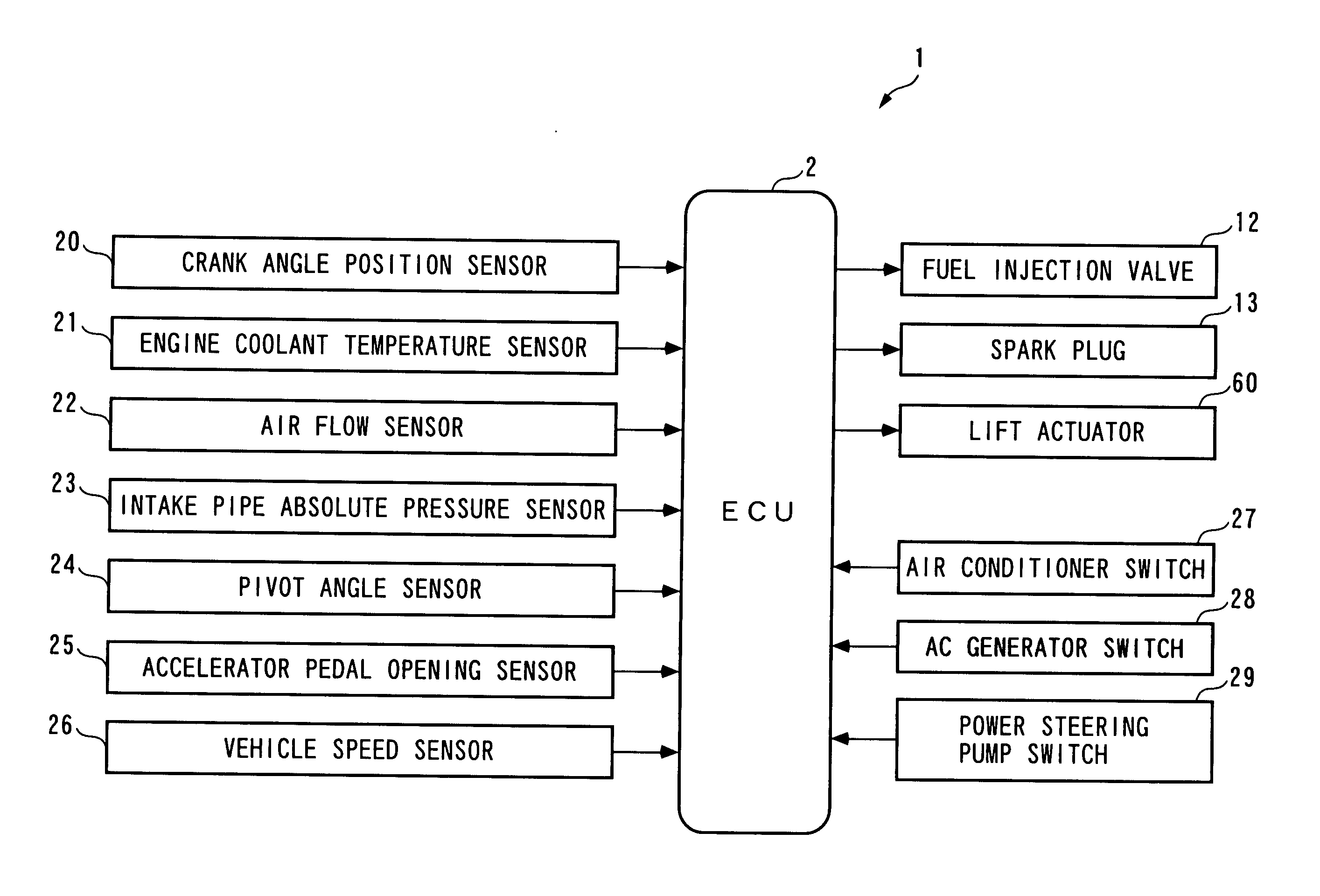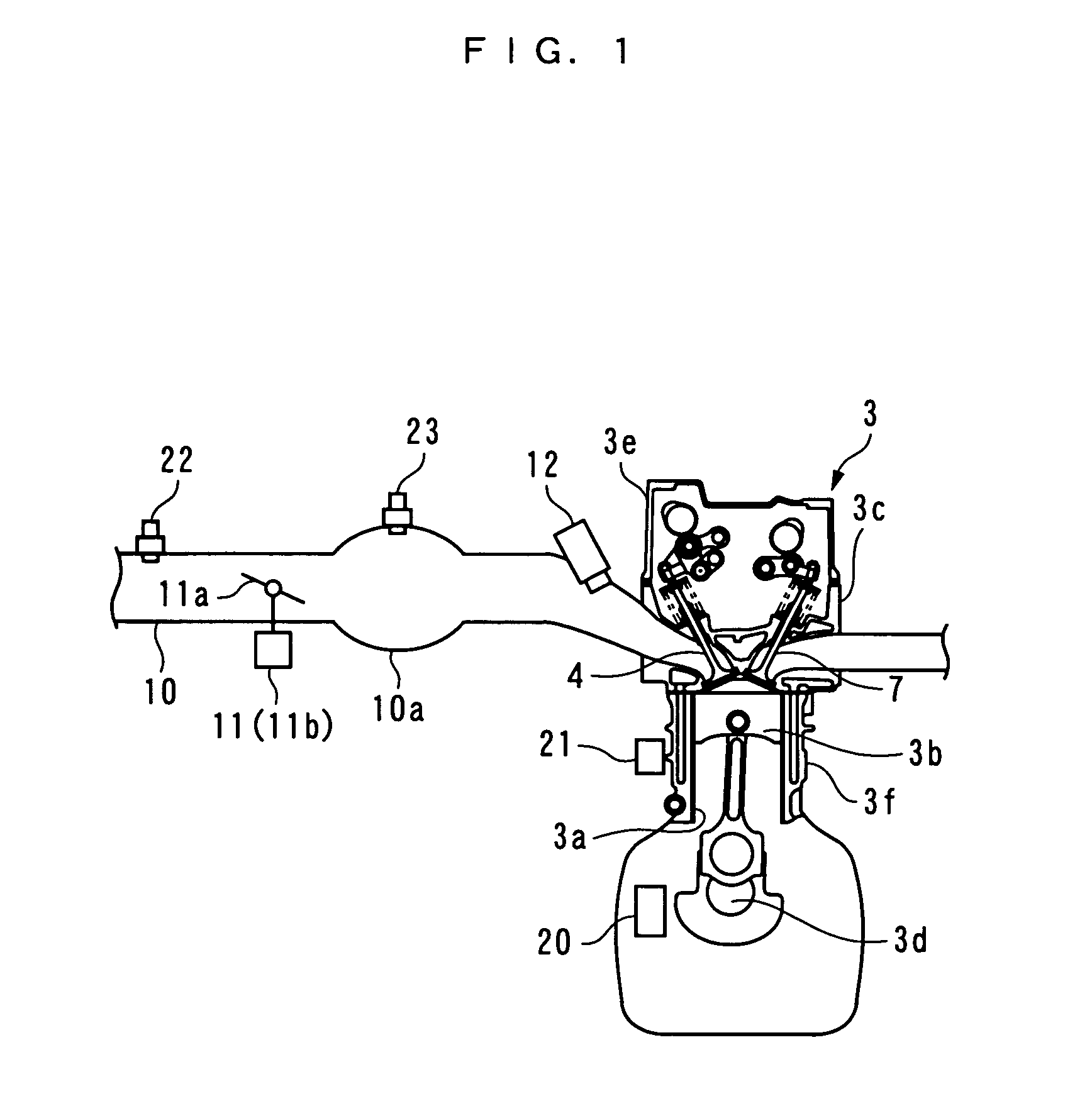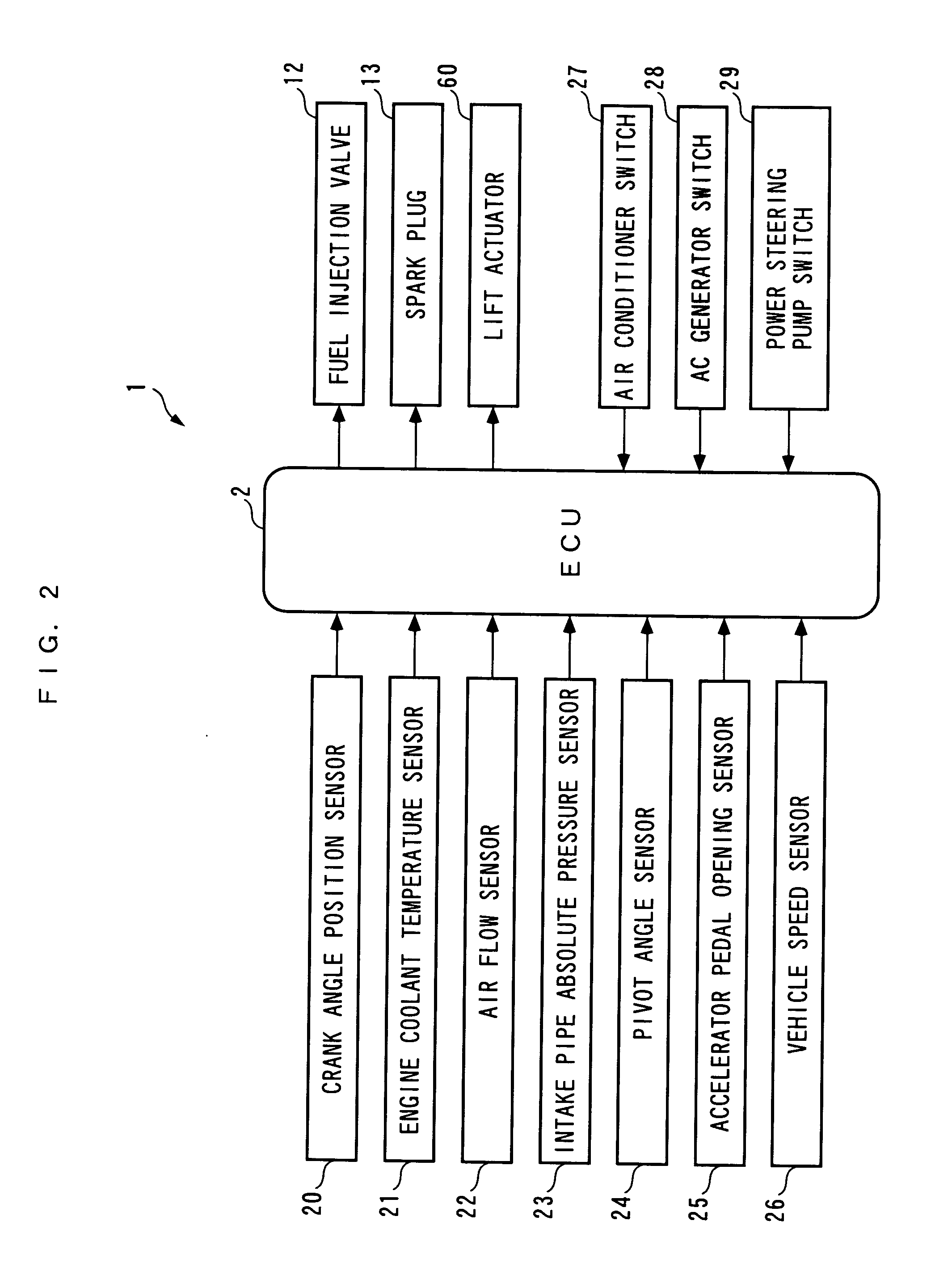Control System
- Summary
- Abstract
- Description
- Claims
- Application Information
AI Technical Summary
Benefits of technology
Problems solved by technology
Method used
Image
Examples
Embodiment Construction
[0070] Hereafter, a control system according a first embodiment of the present invention will be described with reference to drawings. The control system 1 includes an ECU 2, as shown in FIG. 2. As described hereinafter, the ECU 2 carries out control processes, including an idle engine speed control process, depending on operating conditions of an internal combustion engine (hereinafter simply referred to as 22“the engine”) 3.
[0071] Referring to FIGS. 1 and 3, the engine 3 is an in-line multicylinder gasoline engine having a multiplicity of pairs of cylinders 3a and pistons 3b (only one pair of which is shown), and installed on a vehicle, not shown. The engine 3 includes an intake valve 4 and an exhaust valve 7 provided for each cylinder 3a, for opening and closing an intake port and an exhaust port thereof, respectively, an intake camshaft 5 and intake cams 6 that actuate the intake valves 4, a variable intake valve-actuating mechanism 40 that actuates the intake valves 4 to open ...
PUM
 Login to View More
Login to View More Abstract
Description
Claims
Application Information
 Login to View More
Login to View More - R&D
- Intellectual Property
- Life Sciences
- Materials
- Tech Scout
- Unparalleled Data Quality
- Higher Quality Content
- 60% Fewer Hallucinations
Browse by: Latest US Patents, China's latest patents, Technical Efficacy Thesaurus, Application Domain, Technology Topic, Popular Technical Reports.
© 2025 PatSnap. All rights reserved.Legal|Privacy policy|Modern Slavery Act Transparency Statement|Sitemap|About US| Contact US: help@patsnap.com



